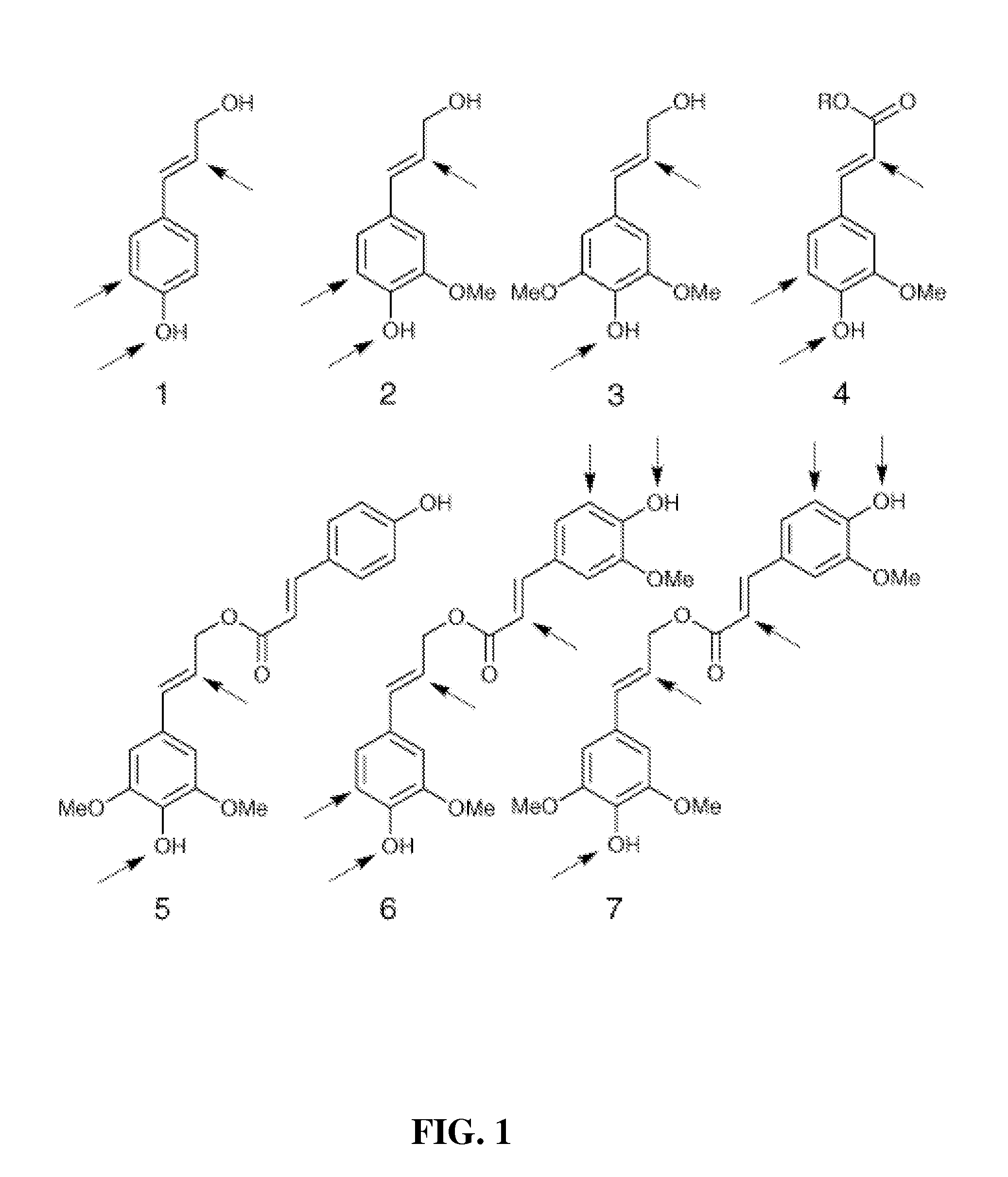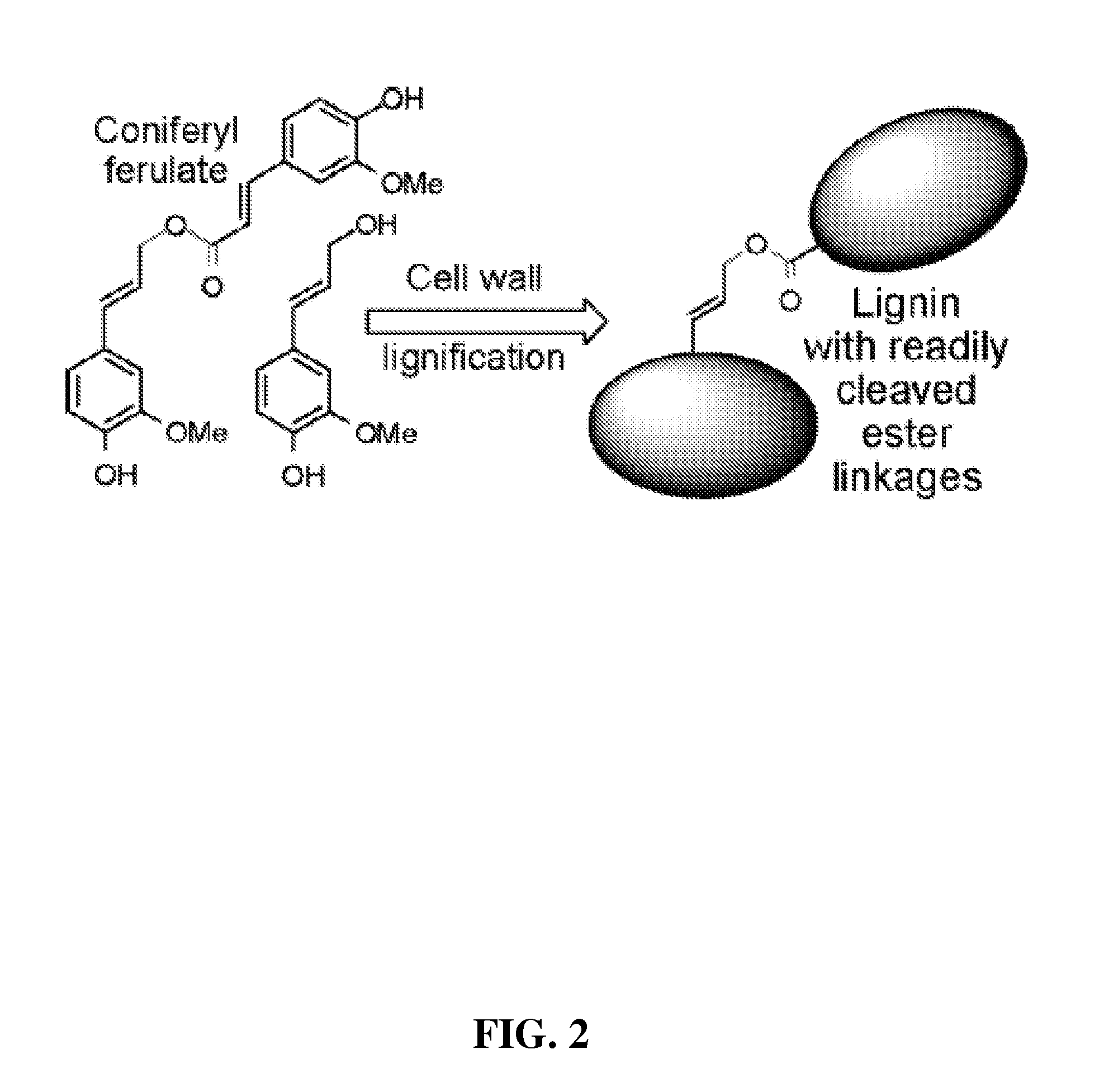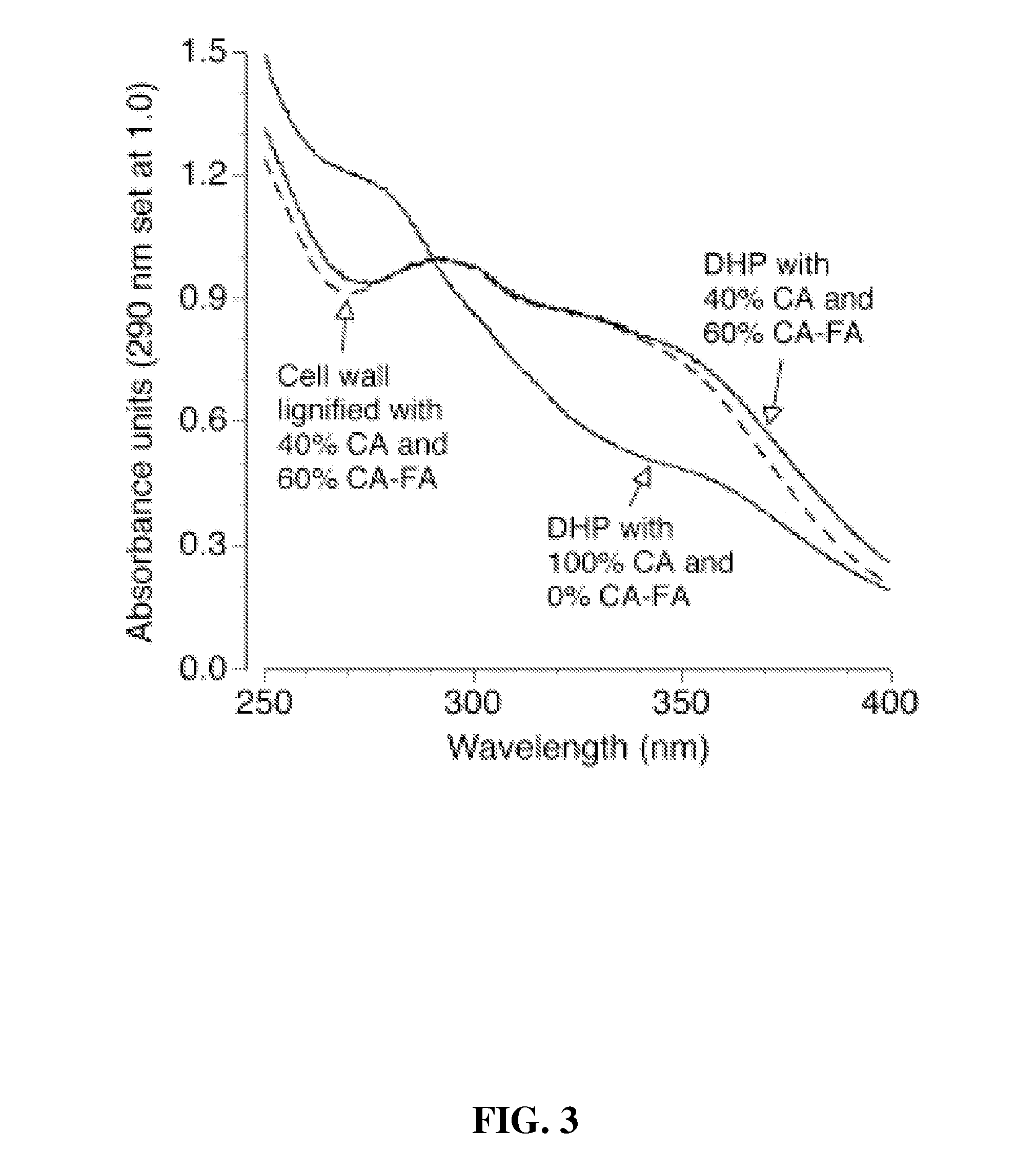Method for modifying lignin structure using monolignol ferulate conjugates
- Summary
- Abstract
- Description
- Claims
- Application Information
AI Technical Summary
Benefits of technology
Problems solved by technology
Method used
Image
Examples
examples
[0063]The following Examples are included solely to provide a more complete disclose of the invention disclosed and claimed herein. The Examples do not limit the scope of the claimed invention in any fashion.
[0064]Cell Wall Lignification: Freshly isolated primary cell walls (˜1.05 g dry weight) from maize cell suspensions (Grabber, J. H.; Ralph, J.; Hatfield, R. D.; Quideau, S.; Kuster, T.; Pell, A. N. J. Agric. Food Chem. 1996, 44, 1453-1459) were stirred in 120 mL of homopiperazine-N,N′-bis-2-ethanesulfonic acid (Homopipes) buffer (25 mM, pH 5.5 with 4 mM CaCl2) and artificially lignified by adding separate solutions of lignin precursors (250 mg in 70 mL of 35% (v / v) dioxane / water) and H2O2 (30%, 225 μL in 90 mL water, ˜1.4 equiv) at 3 mL / h. Precursor mixtures were comprised of coniferyl alcohol substituted with 0, 20, 40, or 60% (by weight) of coniferyl-ferulate. Precursor treatments were replicated by carrying out two independent runs of the experiment. Precursors were also prep...
PUM
| Property | Measurement | Unit |
|---|---|---|
| Percent by mass | aaaaa | aaaaa |
| Percent by mass | aaaaa | aaaaa |
Abstract
Description
Claims
Application Information
 Login to View More
Login to View More - R&D
- Intellectual Property
- Life Sciences
- Materials
- Tech Scout
- Unparalleled Data Quality
- Higher Quality Content
- 60% Fewer Hallucinations
Browse by: Latest US Patents, China's latest patents, Technical Efficacy Thesaurus, Application Domain, Technology Topic, Popular Technical Reports.
© 2025 PatSnap. All rights reserved.Legal|Privacy policy|Modern Slavery Act Transparency Statement|Sitemap|About US| Contact US: help@patsnap.com



